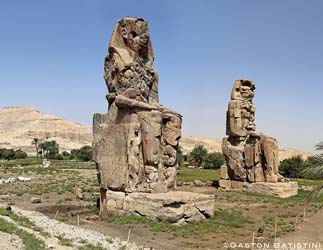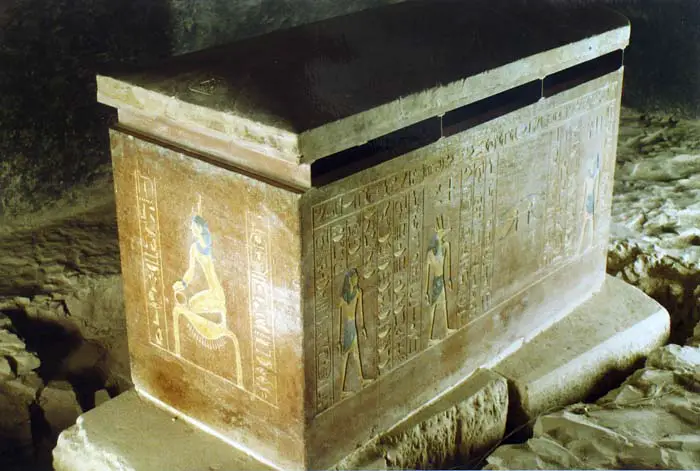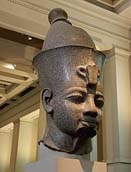Amenhotep III | The Magnificent
Known as Egypt’s Sun King, Amenhotep III ruled for almost 40 peaceful and prosperous years. Historians consider him a successful hunter and a highly cultivated leader. His reign contributed to the view of Egypt’s 18th dynasty as the “Golden Age.”
Royal Family
The Thutmosid royal family had ruled Egypt for almost 150 years when Amenhotep III was born to Thutmose IV and his minor wife Mutemwiya in approximately 1388 BC. Succeeding his father on the throne as the ninth king of the dynasty, Amenhotep ruled between 1386 and 1351 BC.

© Justin Ennis - Statue of Amenhotep III
Egyptologists list his length of reign as varying between 38 to 40 years. Most experts believe he became pharaoh sometime between the age of six and 12 years of age under the guidance of an unknown co-regent.
Amenhotep was his actual birth name, meaning “Amun I Pleased, Ruler of Thebes”. Although he was often known as “Amenhotep the Magnificent”, his actual thrown name was Nub-maat-re, or “Lord of Truth is Re”.
During the second year of his reign he married Tiye. Although she was not of royal blood, she came from a powerful Egyptian family. Amenhotep took many wives during his reign. His harem included at least six foreign diplomatic arrangements and two of his own daughters.
Egyptologists have identified two sons and four daughters. His first son, the crown prince Thutmose, died at an early age. His second son by Queen Tiye, Amenhotep IV, succeeded him and later changed his name to Akhenaton. His grandson was the famous King Tutankhamun.
Massive Buildings
Amenhotep’s reign focused on expanding diplomatic contacts instead of military campaigns. Early in his reign, successful expeditions in Nubia appear to be his most significant military involvement. The majority of his accomplishments focused on building and cultivating the arts.

© Gaston Batistini - Colossi of Memnon
Like many Egyptian pharaohs, Amenhotep worked to ensure his place not only as a king but also as a god. Reliefs at his Temple of Amun at Luxor indicate that his birth was not simply royal, but also blessed and brought about by the gods. Egyptians credit him with building the famous Colossi of Memnon, which was actually the foundation of his mortuary temple. Although the temple was raided during the 19th dynasty for its stone, archaeologists believe that it was the largest mortuary temple built in ancient Egypt.
More statues exist today of Amenhotep than any other pharaoh. Over 250 statues reveal an expansion of the arts during the king’s rule. A new sense of detail and artistry emerged in the statues and reliefs.
Questions of Co-Regency
Although no concrete evidence has been presented, a few historians believe that a co-regency between Amenhotep and his son Akhenaton may have existed. Although most Egyptologists dismiss this theory, multi-national teams of Egyptologists continue to research the issue.
The King's Afterlife
Egyptologists identify tomb KV22 in the West Valley of the Kings as the tomb of Amenhotep III. Decorated with a version of the “Book of What is in the Underworld”, the tomb uniquely featured the king as the royal ka. The tomb showed evidence of many raids from antiquity to modern times. Every object inside was damaged or fragmented.

© ir0ny - The tomb of Amenhotep III
Amenhotep’s mummy was located in a royal cache within the tomb of Amehotep II. Investigations of the mummy reveal the king to be between 40 and 50 years old at the time of his death. Reliefs show that he was ill towards the end of his reign. His cause of death is unknown.
Quick Facts
- Built temples in Egypt, Nubia and Sudan.
- Extensive records list everything from the royal family's favorite colors to their pets' names.
- Patron of the arts.
- Devoted the first 10 years of his reign to big-game hunting and the next 30 to living in luxury.

